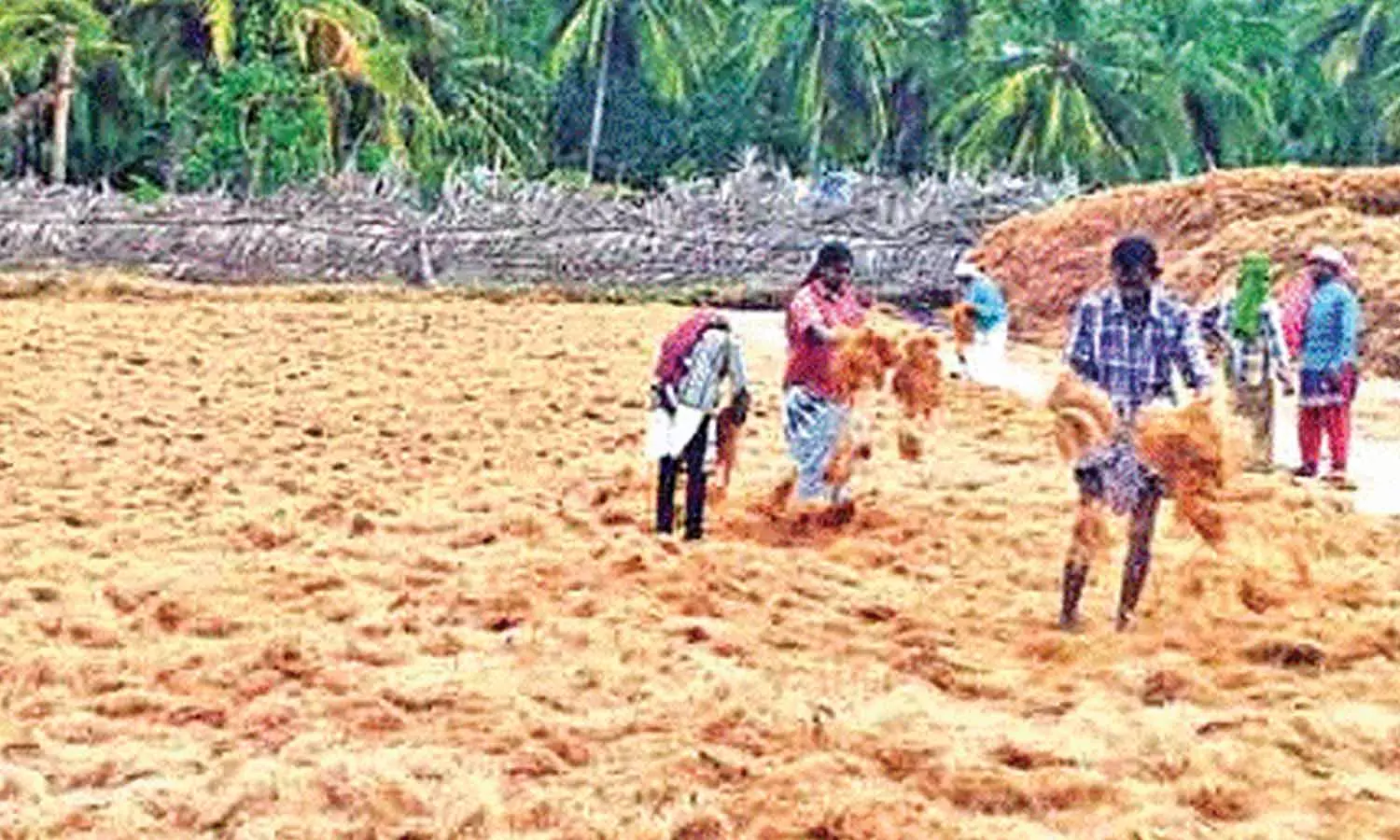Pollachi's troubled coir industry seeks state aid to make value-added products
The non-performing assets (NPA) of coir units in banks have gone up. Even though the international market is picking up, almost 90 per cent of exports are made as raw materials; fibre and cocopith without any value addition.;

Workers at a coir unit spreading the coconut fibre for drying
COIMBATORE: The coir units, which are on the path of downfall, have sought the help of the State and central governments to provide them with financial support to adopt the latest technologies in making value-added products.
A drastic fluctuation in international prices, the non-performing assets (NPA) of coir units in banks have gone up. Even though the international market is picking up, almost 90 per cent of exports are made as raw materials; fibre and cocopith without any value addition.
“If coir units have to embrace value addition of raw materials, then it could be possible only with the government’s support and by getting bank loans to modernize the existing infrastructure to make products on par with global standards. There is better scope for value-added products in the international market,” said SK Gowthaman, president, National Coir Federation and ex-coir consultant, United Nations Development Programme. For instance, coir fibre could be used to make wood that may help in making furniture and others. Therefore, it may prevent the cutting of trees and battle climate change.
“Perhaps, the country’s coir sector could witness a boom to reach a target of one lakh crore by 2030, if the government provides MSME stress relief fund towards making advancements for the sector. This will fetch carbon credit for our sector in the international market. But if the government fails to support it, by 2025, almost 90 per cent of the industry will shut down,” said J Adithya, general secretary, National Coir Federation.
The Pollachi region witnessed a significant boom in the coir sector when China began to import coir from India a decade back.
From around 200 units, the number of coir-making firms more than doubled to 450 after China began to procure fibre for making value-added products.
But the subsequent slowdown has led to a State of uncertainty and thousands of workers were rendered jobless in the coir sector.

